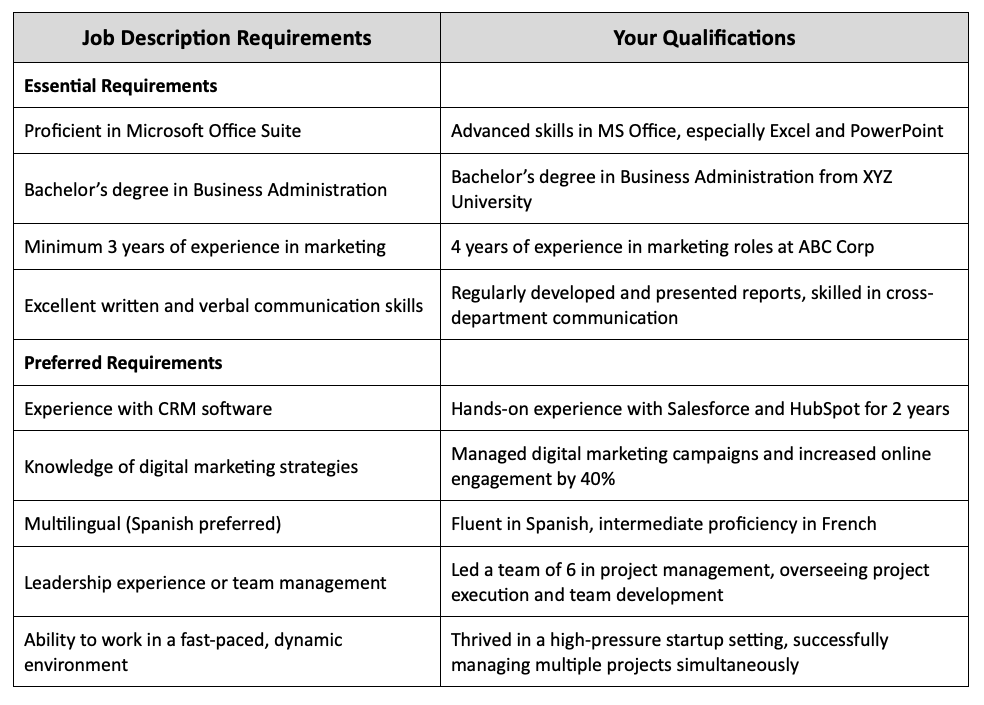How many times did you doubt yourself, thinking you were not a good fit for the role and ended up not applying? This simple tool can help you truly understand your worth objectively and minimize the imposter syndrome.
The job fit assessment method
Conducting a self-assessment is a crucial step in the job application process, especially when it comes to understanding how well your skills and experiences align with a specific job. This process, commonly referred to as a job fit assessment, can significantly enhance your chances of finding a perfect job that matches your competencies and career aspirations. A thorough job fit analysis is often the foundation of an effective job fit assessment.
Job analysis method: The T-chart
One practical and essential concept in job fit analysis is the T-chart method. This analysis method involves creating a two-column chart. On one side, you list the job specifications and competencies as stated in the job description. On the other side, you map your skills and experiences against these requirements. Let’s see an example of a job fit analysis using a T-chart, with both essential and preferred job requirements.

How to distinguish between a perfect job fit and a poor job fit?
The job fit assessment process is a critical tool for job seekers to evaluate how well they fit a role, mainly when using a T-chart to compare their qualifications against a job post’s requirements. This method involves analyzing the job tasks and requirements listed in the job posting and then systematically assessing one’s skills and experiences to see if they align.
Reading the job fit results
To determine if you meet 80% or more of the essential qualifications and some preferred qualifications, start by listing each requirement under ‘needed to perform the job’ and ‘preferred skills’ in the job description. Next, match your qualifications against these. This thorough job examination will help you understand the functions of the job and assess your suitability.
For each requirement, consider whether your experience and skills are a robust match. If you meet a requirement entirely, that’s a full match. If you partially meet it, that’s a half-match. Tally up your full and half matches and compare them to the total number of requirements. If your full and half matches constitute at least 80% of the basic requirements, plus some preferred ones, you’re likely a good fit.
This job match analysis output is more than just a checklist; it’s a strategic tool to guide your application. It determines if you have the relevant skills and competencies needed to perform the job. It informs you how you should tailor your resume and prepare for interview questions, ensuring you highlight how effectively you can perform the job. The job match analysis process provides everything you need to know about your fit for the role, making it a vital step for job seekers.
In conclusion, taking the time to conduct a thorough job fit analysis using the T-chart method is essential for enhancing your job application process. This strategic approach can significantly improve your chances of finding roles that are not only a perfect match for your skills but also conducive to your career growth.
For detail examples and further reading: https://inbullseye.com/learn/how-to-assess-your-job-fit-to-find-the-perfect-job/




